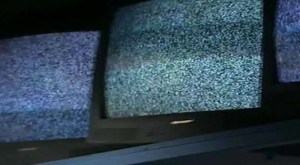 AT&T’s DSL customers are promised high speed service that can never be delivered thanks to speed caps and dishonest marketing. That is the premise of a lawsuit filed against AT&T way back in 2005 in St. Louis County Circuit Court. After years of languishing, the lawsuit has recently been certified a “class action,” which means it could eventually expose AT&T to thousands of settlements with DSL customers all the way back to 2000 in Missouri, Kansas, Oklahoma, Arkansas, and Texas.
AT&T’s DSL customers are promised high speed service that can never be delivered thanks to speed caps and dishonest marketing. That is the premise of a lawsuit filed against AT&T way back in 2005 in St. Louis County Circuit Court. After years of languishing, the lawsuit has recently been certified a “class action,” which means it could eventually expose AT&T to thousands of settlements with DSL customers all the way back to 2000 in Missouri, Kansas, Oklahoma, Arkansas, and Texas.
An attorney with Gray, Ritter & Graham in St. Louis, which is handling the case, accused AT&T of making speed claims for its DSL service it knew it could never actually deliver to consumers. The suit describes several instances where customers’ modems were artificially locked at speeds far lower than promised in company advertising, often making it impossible to reach even the minimum promised speeds.
“They were being charged for these high speeds that could not be delivered,” said Don Downing, an attorney with the firm.
AT&T admits it does cap DSL speeds, but calls the process “optimization.” That usually refers to the process of identifying the maximum supportable speed a telephone line can handle with minimal errors, and then configuring the modem not to exceed that speed. As DSL speeds will decrease the further away a customer lives from the phone company’s facilities, typically advertised speeds are often achieved only by a select few who live very close to the phone company’s exchange office.
AT&T maintains records of every customer capped, and at what rate. The legal firm handling the case considers that a potential road map of identifying impacted consumers.
AT&T has notified the court it may seek to appeal the class certification, but otherwise does not comment on pending litigation.
Many customers have not been impressed with AT&T’s DSL service.
“We recently left AT&T because our DSL, which worked fine, suddenly stopped working completely and when it was brought back up, it was almost as slow as dial-up. The service guy told me that was as fast as we would ever get with DSL, which was odd because two weeks earlier the speed had been fine,” Anne writes. “Needless to say, we’ve switched to Charter (Cable).”
Another AT&T customer noted getting out of bad AT&T DSL service can be difficult, unless you are willing to pay.
Dano notes, “When you sign up, there’s a one year contract and termination fee on the lowest speed you’d have to deal with if you close your account early. They will get you either way.”


 Subscribe
Subscribe



